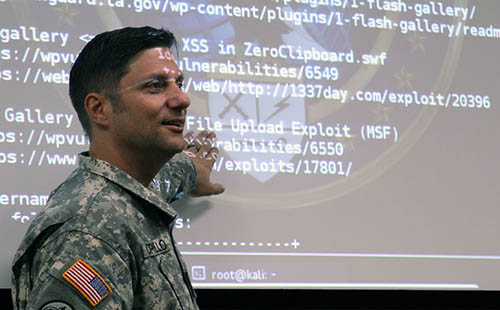Shortly after confirming the development of swarm technology, the Kremlin announced, through the KRET companies, that the unmanned version of the sixth generation fighter will be equipped with microwave weapons.
Despite Russia not yet operating its fifth-generation fighter, Moscow plans to fly a hypersonic platform within the 2025. Declarations impossible to confirm, but from Moscow they specify that the planning phase is well underway, with concept final already validated.
According to KRET, currently responsible for the T-50 electronic warfare (photo), the unmanned fighter that will fly in the 2025, will be equipped exclusively with microwave weapons.
The electromagnetic pulse - according to KRET - it is so powerful that it makes any attempt to protect the pilot vain. No matter how well we can shield the cabin - say from KRET to TASS - the impulse would be able to cause serious damage to the pilot. There is no way to shield the pilot and protect him at 100% from radiation.
According to the specifications revealed by KRET, the unmanned version of the sixth generation fighter will be able to reach hypersonic speeds and operate at levels close to the outer layer of the atmosphere.
Like the American counterpart, the Russians are focusing on the MUT concept for the future sixth generation fleet. The program Manned-Unmanned Teaming of the American army, it allows a pilot who is on a flying platform (helicopter or fighter) to control the formation of drones. The new US doctrine in fact provides for "a constant evolution of automation in the field, with human pilots destined to become commanders in the field". If the MUT were imposed by the Pentagon as the main specification for the sixth generation fighter, the 2030 pilots would become field commanders in the rear lines.
We know that the US and Russian defense industries have been at work for some time on the new sixth generation fighter. In addition to supercruising speed and the now obvious capacity of armament brought internally, the new fighter could also have a certain self-healing capacity. This feature would allow the aircraft to remain in operational theaters, even after suffering severe damage.
The idea of a self-healing system is not new. In the 2008, the aerospace engineers of the University of Bristol, they developed this technology by taking inspiration from plants and animals. The coating, placed in some vulnerable parts of the aircraft, is composed of two resins: an epoxy and a hardener. The concept is simple: by striking the area covered by the material, the latter emerges from the entrance hole of the bullet or the splinter of the exploded head. The two resins, combining with each other, seal the affected part, allowing the aircraft to continue the mission despite the damage suffered.
 One of the main problems that defense designers will have to face is the protection of aeronautical data and communication lines in an environment where the cyber hacking now represents normality. No country in the world is able to counter any cyber attack, but Northrop Grumman is developing a new system that draws inspiration from the human organism. They explain from Northrop. "When the human body is attacked by a virus, it reacts thanks to the white blood cells that attack and try to manage the infection so as to prevent damage to the body. Our systems, in 2030, will have something very similar." The concept of "digital white blood cell" is based on the ability to inoculate a harmful trace in an inert network before it spreads throughout the entire system.
One of the main problems that defense designers will have to face is the protection of aeronautical data and communication lines in an environment where the cyber hacking now represents normality. No country in the world is able to counter any cyber attack, but Northrop Grumman is developing a new system that draws inspiration from the human organism. They explain from Northrop. "When the human body is attacked by a virus, it reacts thanks to the white blood cells that attack and try to manage the infection so as to prevent damage to the body. Our systems, in 2030, will have something very similar." The concept of "digital white blood cell" is based on the ability to inoculate a harmful trace in an inert network before it spreads throughout the entire system.
Another key factor for the industry is to find the perfect balance between speed and autonomy. Northrop Grumman is focusing on the autonomy of the aircraft and not on its speed, given the obvious capacity of the super-cruise. The designers are also trying to solve the heat management generated by direct energy weapons. Thermal management is particularly difficult when implementing a high power system such as a laser.
The Pentagon plans to make the first self-conscious fighter operational (v.articolo) for the 2040 and implemented in the sixth generation platform that will have already completed part of its development. The learning ability of the new software, currently being developed, is based on the experience of thousands of aerial battles.
(photo: Alex Beltyukov / US Army National Guard)












